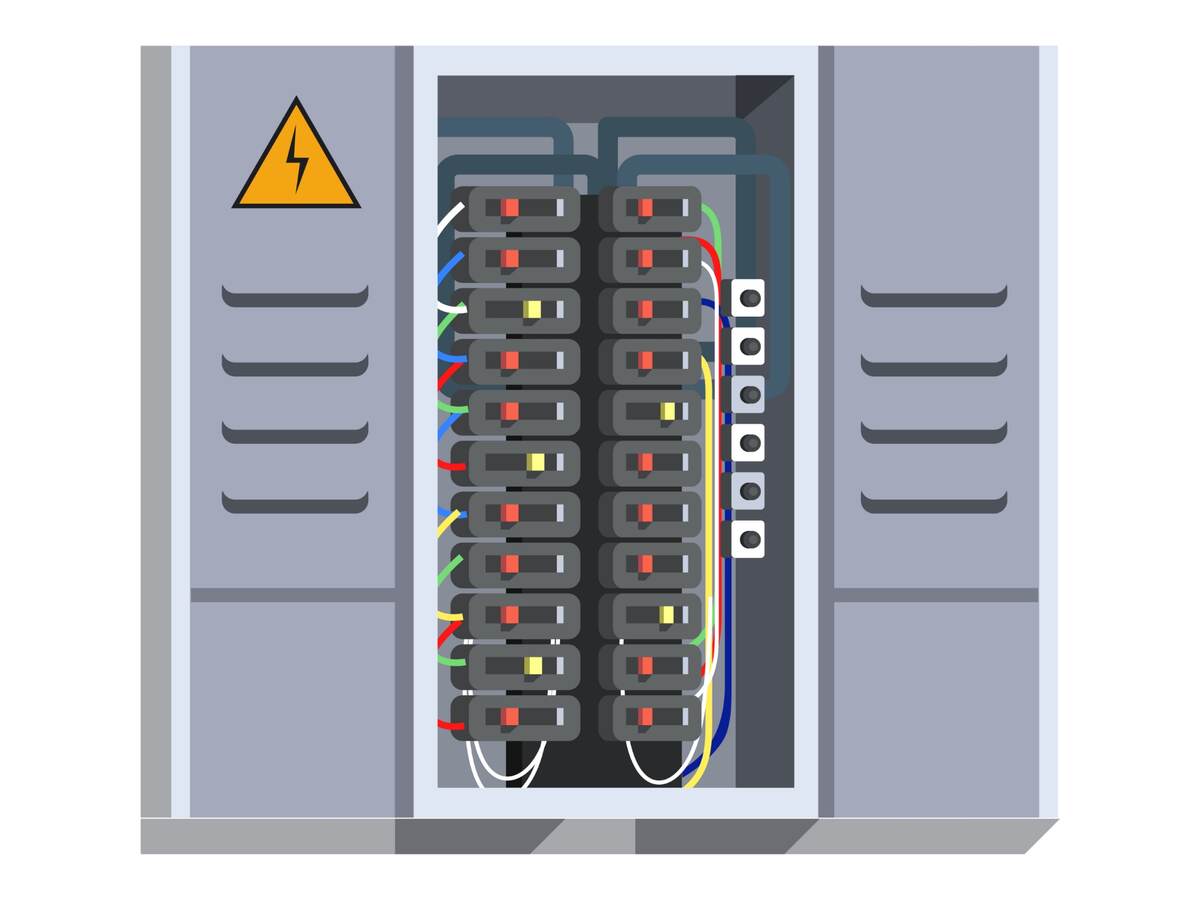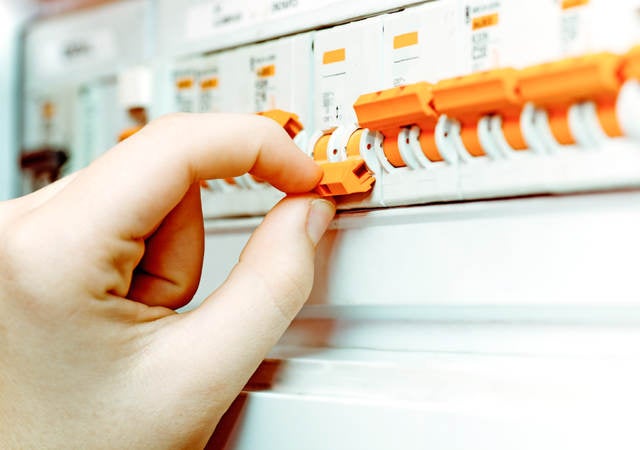Circuit breakers have long represented a vital safety component in the electrical goods sector. These devices interrupt the current flow to protect electrical circuits from damage caused by short circuits or over currents. This protects equipment and reduces the risk of fire and electric shock. As such, it is important for manufacturers to construct circuit breakers that meet safety and quality standards.
Originally published in May 2019 and updated in May 2022, UL 489I is an Outline of Investigation that sets certain requirements for solid-state circuit breakers. In particular, the requirements cover solid-state molded-case circuit breakers (SSCB) and solid-state hybrid molded-case circuit breakers (SSHCB) rated up to 1,000 VAC and 1,500 VDC, switch using semiconductors, and feature an integral air gap for isolation. This means there must be a means for an isolation gap between the line and the load conductors. In addition, UL 489I covers solid-state molded-case switches, and solid-state hybrid molded-case switches also rated up to 1,000 VAC and 1,500 VDC.
The requirements for SSCB and SSHCB devices covered by UL 489I assume that these may provide service entrance, feeder or branch circuit protection per the National Electrical Code® (NEC), ANSI/NFPA 70®. Additionally, the requirements assume that the devices may need auxiliary control power to function.
The requirements of UL 489I are used alongside another UL Standard: UL 489, the Standard for Molded-Case Circuit Breakers, Molded-Case Switches, and Circuit-Breaker Enclosures.
UL Solutions has published the UL 489I Outline of Investigation, which means our customers can move forward with getting the certification and peace of mind that comes with meeting its requirements. The document is now also under review at UL Standards and Engagement to attain the status of a consensus Standard. A task group of interested industry professionals is being formed to raise significant subjects or concerns before a formal proposal review and balloting occurs through a Standards Technical Panel.
What applications would benefit from UL 489I?
Certification paths have been open since the document’s initial publication in 2019, so testing for certification requirements can be performed on solid-state circuit breaker products without customers waiting for the published document to be converted into a consensus standard. It is a wide-ranging document that covers new technologies for overcurrent protection devices that can operate very quickly, be provided with high short-circuit interruption ratings and have little or no arcing effects.
The new type of circuit breaker provides additional options for overcurrent protection devices for many applications. Products covered by UL 489I could be a valuable alternative for providing overcurrent protection in DC circuits, including those in energy storage systems, electric vehicle charging systems, and photovoltaic systems. Circuit breakers and fuses may have limitations in clearing DC fault current at higher DC voltages, and solid-state circuit breakers do not necessarily share these limitations.
Protecting assets is pivotal to manufacturing quality circuit breaker products — especially when valuable assets such as IT equipment, power conversion equipment and other equipment containing expensive power electronics with a limited capacity to withstand stress may be at risk. The ability of solid-state circuit breakers to interrupt current exceptionally quickly can provide improved protection to these critical pieces of equipment.
Many of these solid-state circuit breakers are in their early stages of design, with numerous companies still undertaking R&D activities, and some products are not yet ready for commercialization.
A robust process for peace of mind
Circuit breaker manufacturers can undergo a testing and certification process with UL 489I for their solid-state circuit breakers, which can offer an excellent return on investment. Certification through UL Solutions provides confidence that the product has undergone evaluation by an independent third-party organization with a history of more than 125 years of working for a safer world. Many jurisdictions within the U.S. and Canada and many other countries globally rely on third-party safety certifications.
The test program length varies, depending on the product’s specifications and features and the laboratories involved in testing, such as third-party testing laboratories or the customer’s own facilities. This process can last anywhere from two or three weeks to a few months.
Solid-state technology covered under UL 489I is quite promising and provides enhanced functionality, but, like many innovations, it involves additional risks. This is where the UL 489I requirements are so important: The process primarily subjects the solid-state circuit breaker to the same requirements as a typical electromechanical molded-case circuit breaker, but additional construction and test requirements now address potential risks posed by the new technology.
Safety is the key consideration with the UL 489I requirements for solid-state circuit breakers. Part of the UL 498I testing ensures that the electronic controls that perform safety functions undergo a functional safety risk assessment. The aim is to validate semiconductor switching under automatic and non-automatic operations, correct sequencing of isolating and bypass switches, single-point failure, and loss of power.
The testing for the certification process includes examining the circuit breaker under various normal and abnormal conditions, environmental conditioning, electromagnetic environments, and software operation. Under UL Solutions’ stringent conditions, no failure of the device with respect to the document’s requirements is acceptable. During testing, the products must continue providing protective functionality as an overcurrent protective device as well as a disconnecting switch.
Additionally, as part of the testing requirements, UL Solutions intentionally introduces internal faults to evaluate how the solid-state circuit breaker reacts under internal fault conditions. Ultimately, the requirement during this part of the process is that the device either continues to provide the expected product functionality or, if it does not, de-energizes the load so there is no output power or current. Furthermore, the device itself cannot become a risk of fire or electric shock.
Getting value for money with in-depth processes and reviews
The UL 489I certification process is more involved than the UL 489 certification process. Industry leaders will review the document further as it is converted into a consensus standard. Primarily, UL 489I relies on the same tests that electromechanical circuit breakers with electronic trip units are subjected to under UL 489. The additional tests required under the UL 489I document relate to the risks of relying on this type of semiconductor-based product. Looking ahead, there is further opportunity for discussion within the industry as we progress toward consensus.
The UL 489I Outline of Investigation sets requirements for the application of these products in the United States (U.S.), reflecting the requirements from the NEC, Occupational Safety and Health Administration (OSHA) and other U.S.-based installation standards. For manufacturers intending to market their products where IEC standards are in effect, there may be the additional requirement of demonstrating compliance with an IEC standard. An IEC standard with a similar scope is currently in development, and the UL Solutions project team is working to harmonize UL 489I and IEC standards as closely as possible.
Utilizing the certification process for UL 489I is an investment in safety and quality for circuit breaker manufacturers in the U.S. and beyond. A UL 489I certification mark shows a company’s commitment to safety and the highest manufacturing standards, signaling to customers that this is a product they can trust.
Get connected with our sales team
Thanks for your interest in our products and services. Let's collect some information so we can connect you with the right person.


